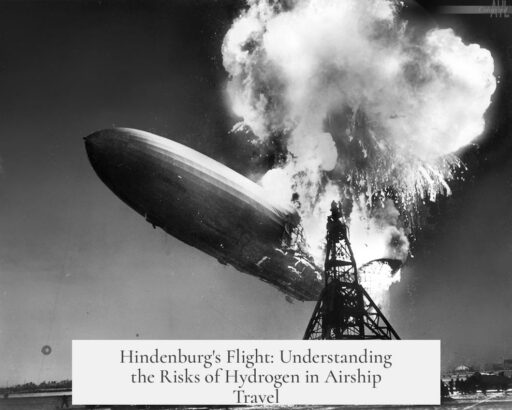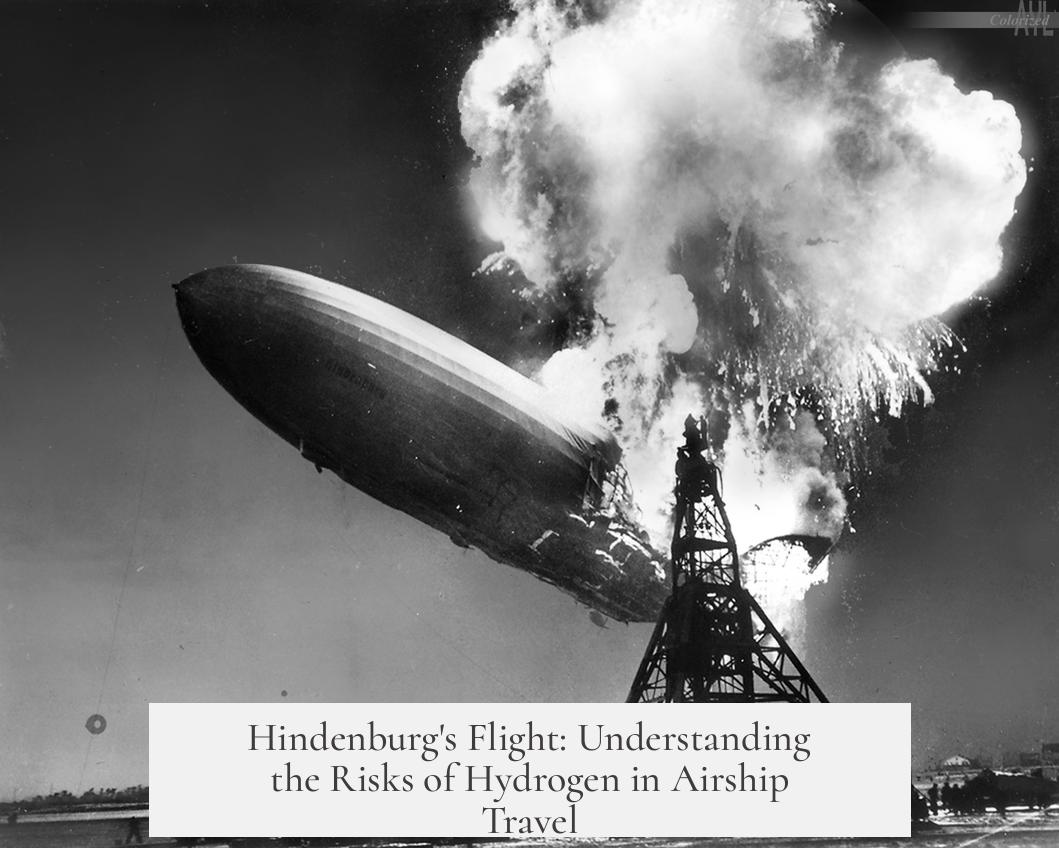The Hindenburg was considered an option for flight despite hydrogen’s flammability because the risks of hydrogen were misunderstood, alternatives like helium were unavailable to the Germans, and hydrogen airships had practical advantages in lift and range over other technologies of the time.
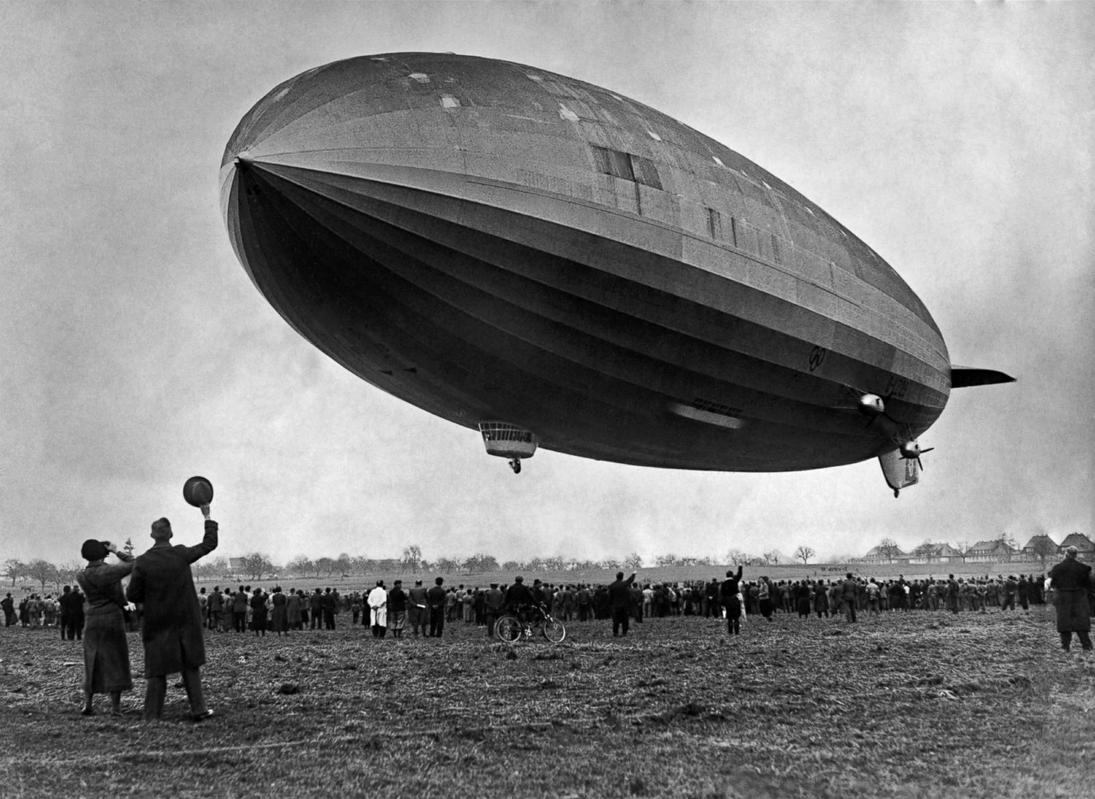
Hydrogen’s reputation for flammability often leads to assumptions that it was an obviously dangerous choice for airships. However, hydrogen itself is not inherently flammable without the proper conditions. For hydrogen to catch fire, it must form a combustible mixture with oxygen. Inside the Hindenburg, or any well-designed airship, this mixture did not exist under normal circumstances. The airship’s designer engineers compartmentalized the hydrogen into multiple gas cells, separated from the outer air, reducing the chances of mixing.
Historical evidence highlights that the Hindenburg survived numerous lightning strikes without catching fire. Lightning even burned holes in the fabric cover but failed to ignite the hydrogen within. This shows that the mere presence of hydrogen gas does not guarantee a fire unless a significant leak occurs and a spark coincides in time and space with the leaking gas.
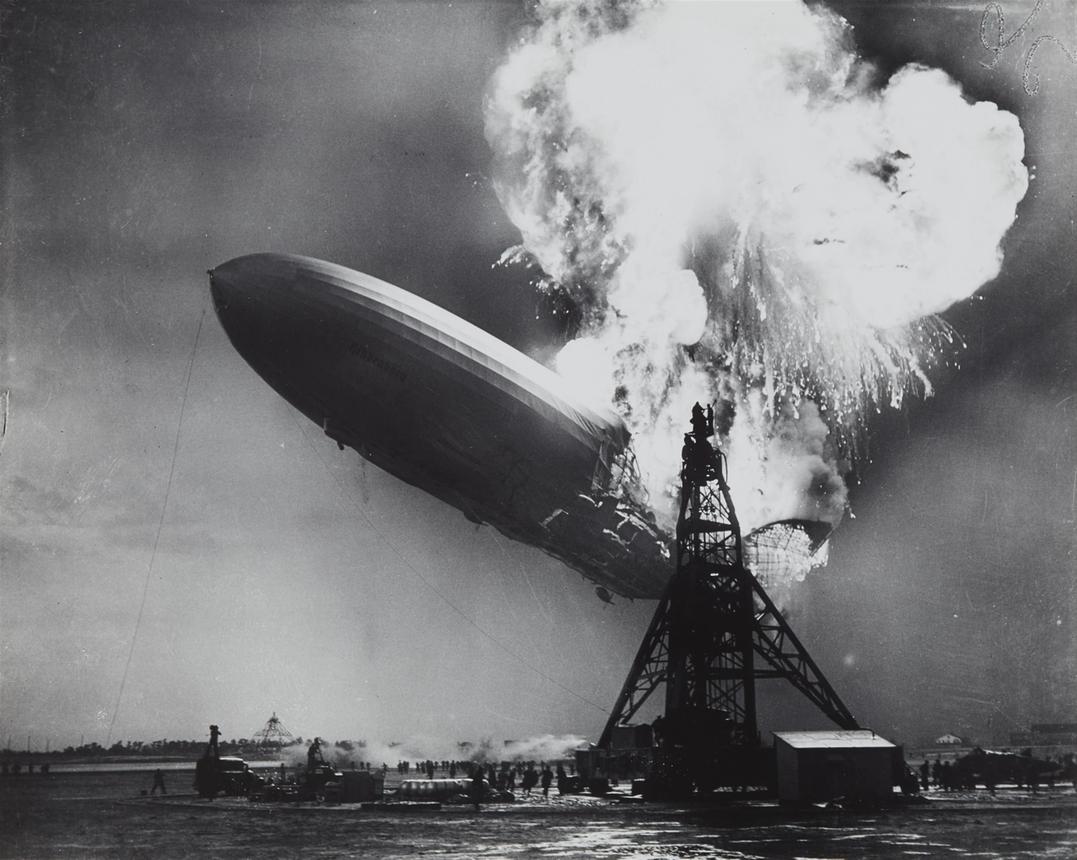
Hydrogen’s physical properties also contributed to its relative safety. It diffuses rapidly—about four times faster than water vapor—so any leaked hydrogen quickly disperses into the atmosphere. This rapid diffusion lowers the risk of a sustained flammable atmosphere forming inside or near the airship. Still, catastrophic failure can happen if enough hydrogen escapes into the surrounding air before dispersing, and if a spark ignites it.
Considering alternatives, helium was a safer gas. It is inert, non-flammable, and provides about 90% of hydrogen’s lifting power. However, helium was scarce and expensive in the 1920-1930s and largely controlled by the United States, which prohibited helium exports. The German builders planned the Hindenburg to use helium, but the helium embargo made it impossible to obtain. They ultimately filled the Hindenburg with hydrogen, the only viable substitute offering sufficient lift.

Hot air balloons were not a practical option for a large airship like the Hindenburg. Hot air provides substantially less lift, requiring heavier fuel systems and burners, which add weight and complexity. Large scale hot-air airships were technologically unfeasible until decades later, with the first successful thermal airship flight only achieved in 1973.
Heavier-than-air airplanes were improving but still limited in range, passenger comfort, and operational reliability compared to airships. The Hindenburg provided long-range, intercontinental flights—such as transatlantic crossings—that heavier-than-air planes could not match at the time. This unique capability gave airships a market niche despite the risks.
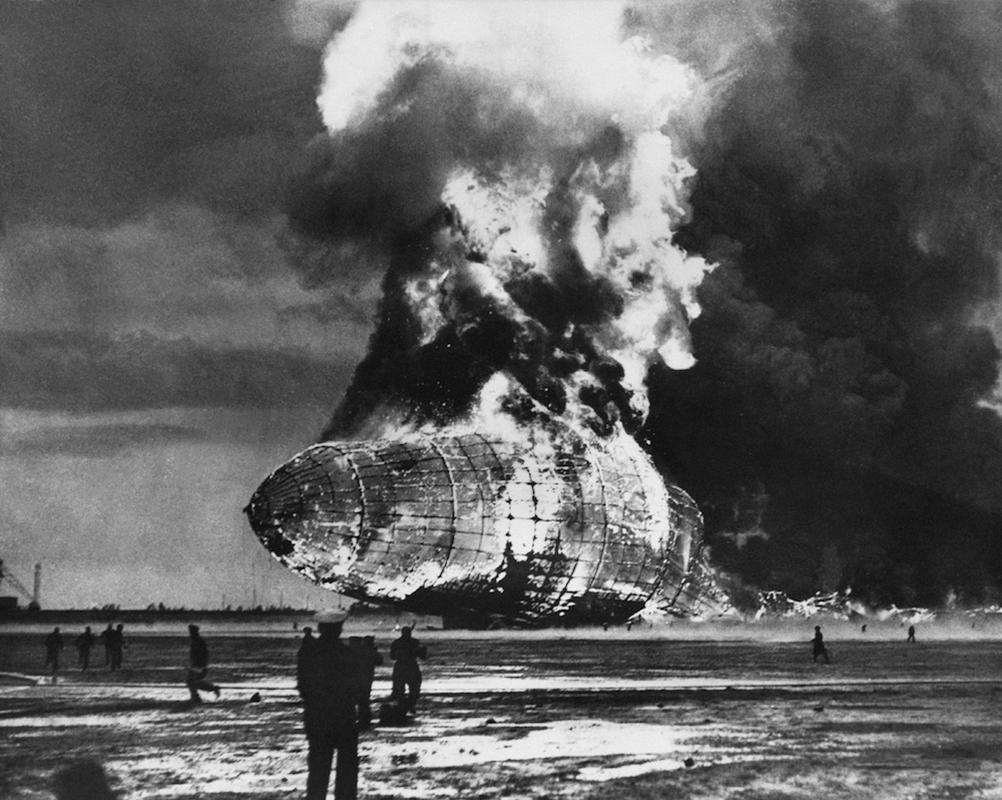
The airship industry, however, was already in decline before the Hindenburg disaster. Improvements in airplane technology and costs were making airships less competitive. A major safety concern for airships was their vulnerability to bad weather. These large and fragile craft could be easily damaged or destroyed by storms. For example, several US Navy helium-filled zeppelins were lost in storms despite using the safer helium gas, highlighting that weather posed an equal or greater danger than hydrogen fire risk.
Key reasons why the Hindenburg used hydrogen despite its flammability:
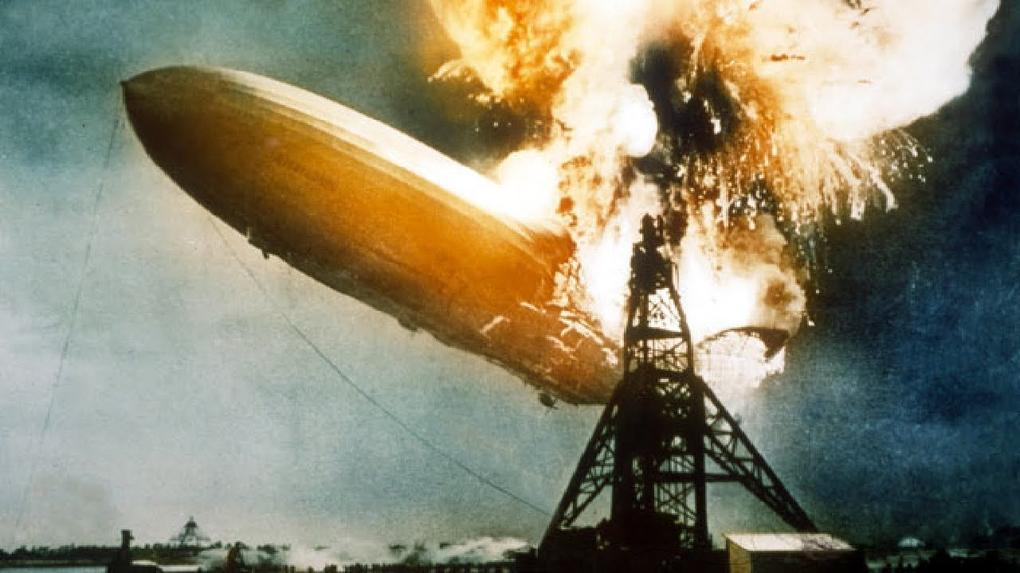
- Hydrogen’s flammability misunderstood; it requires mixing with oxygen and a spark to ignite.
- Helium was unavailable due to US export restrictions and scarce supply.
- Hydrogen provides superior lift compared to hot air, enabling larger, longer-range airships.
- Airship design included safety features like multiple gas cells to contain leaks.
- Airplanes of the period could not yet match airships’ range or comfort level.
Ultimately, hydrogen’s known risks were accepted as manageable given the alternatives and the technology of the era. The Hindenburg’s destruction exposed the dangers, but airship operations up to that point demonstrated hydrogen airships could be operated safely under controlled conditions. The disaster marked a turning point, accelerating the demise of passenger airships in favor of airplanes powered by advancing aviation technology.
Why Was the Hindenburg (Zeppelins) Even Considered as an Option to Fly If It Was Already Well Known How Flammable Hydrogen Is?
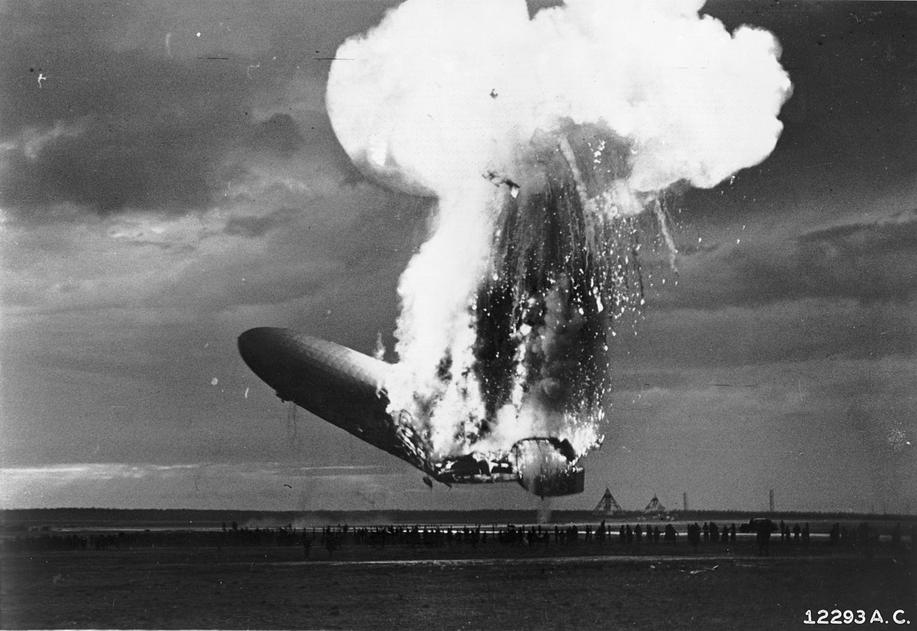
The Hindenburg and its hydrogen-fueled brethren were chosen for flight despite hydrogen’s fiery reputation because the actual risks were misunderstood, alternatives were limited, and hydrogen had unique advantages in lift and availability—especially in the 1930s. That’s the quick answer. Now let’s unpack this century-old aviation mystery with facts and a sprinkle of humor.
When most people think of hydrogen, they imagine a cartoonish explosion waiting to happen. But hydrogen itself is not inherently flammable. You read that right. It’s a gas that won’t burst into flames simply because a spark flew nearby. The infamous Hindenburg was even struck by lightning multiple times during its short career—no disaster occurred. The lightning, ironically strong enough to burn holes in the outer cover, didn’t ignite the hydrogen inside.

This is because hydrogen needs a very specific condition to catch fire: it must mix with oxygen to create a flammable atmosphere. Inside the Hindenburg, engineers carefully avoided mixing these gases. The hydrogen was sealed in separate gas cells. The airship wasn’t one big balloon; it was a cluster of smaller hydrogen compartments designed to minimize leaks and reduce risk. If hydrogen leaked, its extreme tendency to diffuse quickly into the atmosphere (about four times faster than water vapor!) meant that dangerous pockets didn’t linger. They dispersed swiftly, making fires rare events.
Still, accidents happen. The Hindenburg disaster wasn’t a simple case of “hydrogen+lightning=kaboom.” It required a rare combination of circumstances—a sizable hydrogen leak near a spark source, before the leak had time to dissipate. This combination was, thankfully, incredibly rare but tragically occurred on that fateful day.
So Why Use Hydrogen If It’s Risky?
Here’s a twist: hydrogen was the best option for lift at the time. Hot air balloons had been flying since forever, but hot air as a lifting gas for huge airships? Not practical in the early 20th century. Hot air offers far less lift than hydrogen. Plus, it needs a burner and a lot of fuel onboard, which adds weight and complexity. Hot-air-powered airships weren’t successfully flown until 1973—a full 40 years after the Hindenburg disaster.
Then there’s helium, often called the “safe” alternative. Helium is completely inert—no danger of fire at all. It offers nearly 90% of the lifting power of hydrogen, enough to carry most typical airship payloads. Sounds perfect, right? Not quite.
The big problem with helium was its scarcity and cost. Helium is famously rare on Earth and mostly found trapped in natural gas reserves. In the 1920s and 1930s, helium extraction was in its infancy. The United States, the main helium producer, imposed strict export bans, especially toward countries like Germany. The Hindenburg was specifically designed to use helium but was forced to settle for hydrogen. This substitution may have affected the design and possibly contributed to some vulnerabilities.
To put it bluntly, Germany couldn’t just buy helium like buying an airline ticket. It was locked away, a treasure of the US gas fields. This geopolitical fact sealed hydrogen’s role in the Hindenburg story. Imagine designing a spaceship and then having to use a different fuel because the “safe” one is embargoed—frustrating and dangerous!
How Did Hydrogen Airships Compare to Airplanes?
Airplanes in the 1930s were still risky. Range was limited, comfort was poor, and long intercontinental flights were a serious challenge. Airships were the luxury liners of the sky—smooth, spacious, and able to glide silently over continents without frequent stops. The idea of flying comfortably from Europe to America with a view was compelling.
Hydrogen airships could cover vast distances with a reliability that airplanes hadn’t yet matched. So, despite their danger, they were seen as a reasonable compromise between risk and reward. The promise of combining luxury and long range outweighed the known risks of hydrogen’s flammability—mostly because those risks were better controlled than people today realize.
The Bigger Picture: Airship Vulnerabilities Beyond Hydrogen
Their Achilles’ heel wasn’t just hydrogen. Airships were large, fragile beasts vulnerable to weather. Storms could easily tear them apart or force crashes. The US Navy’s helium airships went down in storms despite lacking flammable hydrogen, including the USS Shenandoah. This highlights that weather, rather than gas choice, often posed a bigger threat than fire.
Moreover, the airship industry was already declining due to advances in airplane technology, helium costs, and overall safety concerns. The Hindenburg disaster was a final nail in the coffin but not the sole cause of airships falling out of favor.
So, What Can We Learn?
- Hydrogen’s reputation as “death gas” was overblown. With careful design, it was much safer than popularly believed.
- Limited alternatives at the time forced designers into tough choices. The lack of accessible helium made hydrogen the default.
- Airships filled a niche airplanes couldn’t match in comfort and range. This unique value proposition kept hydrogen airships flying despite risks.
Hydrogen’s flammability is a real danger, but the Hindenburg’s tragedy was an unfortunate alignment of multiple failures, not just hydrogen’s nature. Today, we still use hydrogen in rocketry and experiments, showing that smart engineering can tame even the riskiest materials.
Next time you hear “Hindenburg disaster,” think beyond the spectacle. Consider the context, limitations, and innovations behind those majestic floating giants of the early skies. Was hydrogen a perfect choice? No. Was it a reasonable one given the era? Absolutely.
